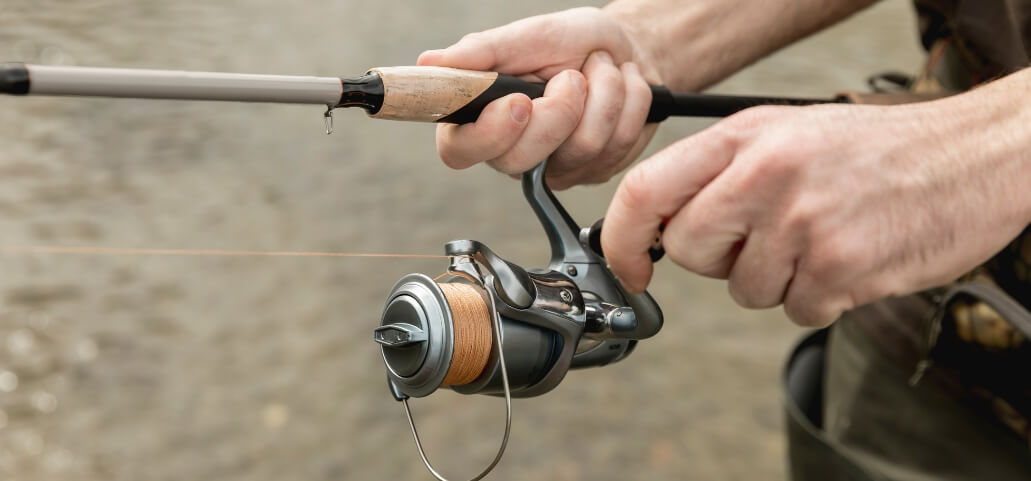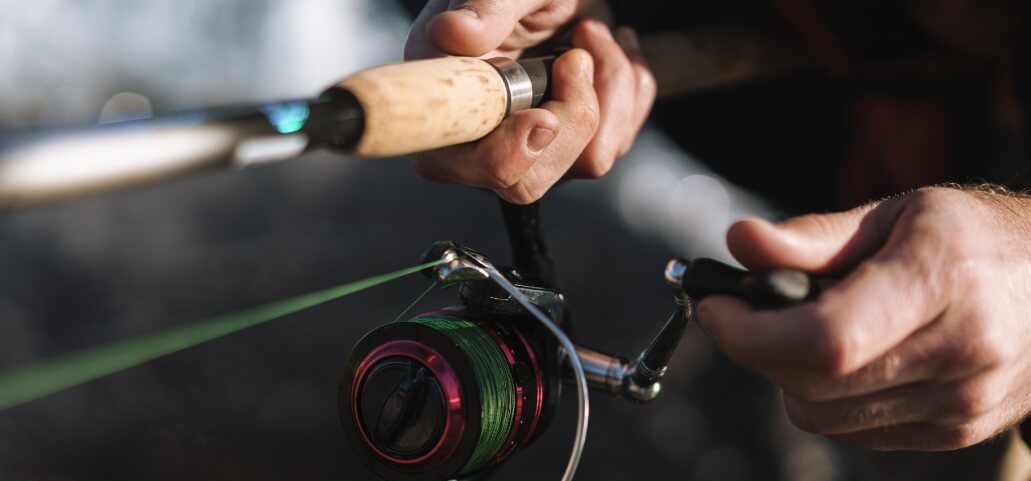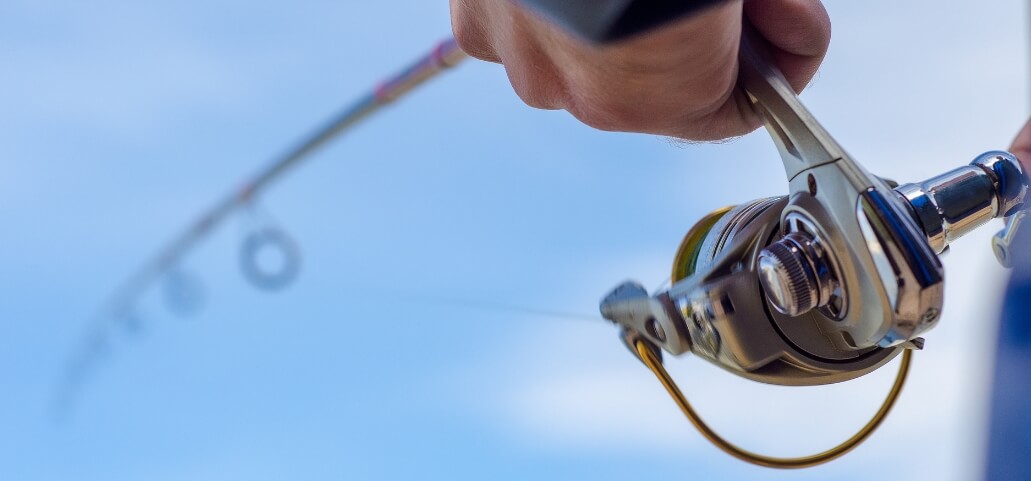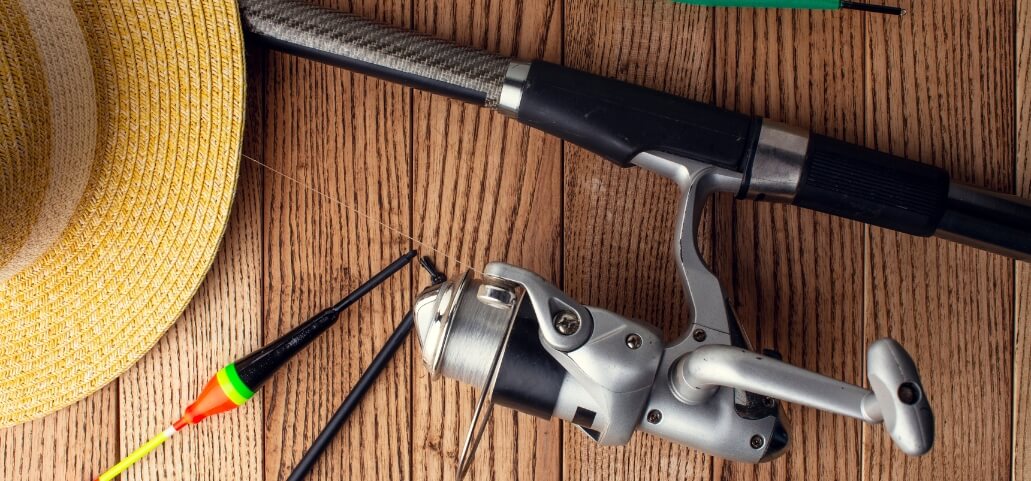Greetings and welcome to our advice on how to repair a fishing rod, Whether you’re a novice or seasoned fisherman, maintaining the best possible condition for your equipment depends on your ability to repair your fishing rod. Everything you need to know about fixing and repair fishing rod from typical problems to detailed fixes will be covered in this extensive guide. Let’s dive into how to repair a fishing rod perfectly and get your rod back in action!”
Understanding Fishing Rod Damage

Repairing a fishing rod starts with carefully recognizing the signs of damage. Whether it’s a cracked tip, a bent rod, or a damaged reel seat, each type of injury requires a specific approach for effective repair. To make sure your fishing gear lasts a long time and performs well you must comprehend these different kinds of damage.
Common Types is How to Repair a Fishing Rod Damage
- Guide Issues: Guides can break or bend out of shape, causing line issues that result in lost fish. A successful fishing excursion depends on making sure all of the guides are present and in good shape.
- Tip Top Damage: The tip top, being the most exposed part of the rod, is highly susceptible to breakage from accidental knocks or impacts. Damage to this important component can be avoided with careful handling and routine inspection.
- Blanks and Ferrules: Cracks in the rod’s blank or ferrules can compromise its structural integrity, leading to potential failure during use. These problems can be found and fixed before they get worse with regular maintenance and careful inspection.
- Handle and Reel Seats: Loose or damaged reel seats and handles can significantly impact the rod’s performance and the overall fishing experience. Checking and tightening these components as needed can prevent disruptions while out on the water.
Causes of Damage
- Neglect: Failing to maintain your rod, such as regular cleaning and inspections, can result in minor issues, like corrosion or weakening, becoming major problems over time, potentially leading to structural damage and compromised safety.
- Accidents: High-stress situations or accidents, such as impact or sudden excessive force, can cause immediate, severe damage to the rod, risking structural integrity and functionality.
- Wear: Consistent use, exposure to environmental factors, and friction from operational activities gradually wear down even the most durable materials, potentially leading to performance degradation and compromised reliability.
Importance of Timely Repairs
Understanding the importance of timely repairs is crucial for maintaining the functionality and longevity of equipment and appliances. It can make the difference between a quick fix that saves time and money, and a costly replacement that disrupts daily routines and incurs unnecessary expenses. People can guarantee the seamless functioning of their possessions and prevent possible safety risks by swiftly addressing concerns.
Tools and Materials Needed for Repair a Fishing Rod

Before you dive into how to repair a fishing rod, it’s essential to have the right tools and materials at your disposal to ensure the repair is done effectively and efficiently.
Essential Tools and Materials
- Adhesives: When it comes to butt ferrule repairs, epoxy resin is the go-to choice due to its exceptional bonding properties. On the other hand, for small guide repairs, hot melt glue is often sufficient thanks to its quick application and strong adhesion, making it a reliable option for anglers on the go.
- Sectioning Tools: A comprehensive set of sectioning tools is indispensable for rod repairs. This may include a hacksaw for precise cutting, a Dremel for intricate shaping, and a rod cutting tool, each serving specific repair requirements and ensuring professional results.
- Replacement Parts: Maintaining an inventory of common replacement parts such as guides, tips, ferrules, and grips is crucial for ensuring quick and efficient repairs when needed. By having these parts readily available, anglers can minimize downtime and get back to fishing sooner.
- Rod Wrapping Thread: A durable and reliable rod wrapping thread is essential for securing guides and adding a decorative touch to the rod. In addition to improving functionality, the selection of thread type and color enables anglers to customize their rods to suit their individual tastes.
- Finishing Cement: The use of finishing cement is essential to seal wraps and protect thread from abrasion, ensuring the longevity and durability of the repaired sections. By carefully applying finishing cement, anglers can maintain the integrity of their rods for years to come.
Importance of Quality Products
If you utilize high-quality tools and materials, your repair will be more successful. Substandard adhesives or replacement parts may not hold up under the stress of fishing, potentially resulting in further damage or a failed repair. It’s important to invest in reliable products to ensure the longevity and effectiveness of your repairs, especially when working with equipment in demanding conditions.
Step-by-Step Guide to Repairing a Fishing Rod

Now, it’s time to get into the nitty-gritty of how to repair a fishing rod. To guarantee a successful repair, carefully adhere to these instructions.
Step 1: Assessing the Damage
A thorough assessment is crucial to any repair job. Start by carefully inspecting your rod under good lighting, ensuring that you examine it from every angle. Inspect for any indications of impairment, including fissures, fragments, or fading. Then, slowly turn the blank, running your fingers over the surface to feel for rough spots or irregularities that could indicate a potential structural defect. By conducting a detailed and comprehensive inspection, you can identify any issues and address them effectively.
Step 2: Preparing the Rod for Repair
To prepare the rod for the replacement, begin by gently heating the adhesive of the old guide or tip top using a lighter or heat gun. Being careful is essential to prevent the rod from overheating, which can weaken the blank and perhaps cause damage to the finish. Clean the area well after removing the old part to guarantee that the new glue sticks properly. This meticulous process is crucial to maintaining the rod’s integrity and functionality.
Step 3: Replacing Broken Guides or Tip Tops
If a guide or tip top on your fishing rod is damaged beyond repair, it’s important to carefully select a replacement that matches the size and fit of the original part. When installing the new guide or tip top, apply a small amount of adhesive and slide it into place. Ensure that it’s aligned with the rest of your guides, and allow the adhesive to cure completely before using the rod again. Your fishing equipment’s lifespan and functionality will be preserved with this meticulous attention to detail.
Step 4: Repairing or Replacing the Rod Blank
For minor cracks in the rod blank, you can use a ferrule wrap to reinforce the area. A ferrule wrap involves applying a thin layer of epoxy around the cracked portion of the rod to provide extra support. However, for more severe damage, such as large fractures or splintered sections, you may need to cut out the affected area and install a new one. This process requires precision and attention to detail, and it’s often best to seek the assistance of a professional rod builder to ensure the repair is carried out effectively.
Step 5: Reattaching the Reel Seat and Handle
Loose or damaged reel seats and handles can be removed and replaced fairly easily with the right tools and know-how. When doing so, it’s important to ensure a secure fit and proper alignment of the reel seat, as this can significantly affect the rod’s balance, casting ability, and overall performance. Taking the time to properly install and align the reel seat will help maintain the integrity and functionality of the fishing rod for many successful outings.
Step 6: Finishing Touches and Testing the Rod
Once the main repairs are complete and the rod has been reassembled, it’s time for the finishing touches. Take the rod wrapping thread and with careful precision, wrap it around the guides and tips to ensure they are securely in place. Pay attention to the tension and placement of the thread to ensure a neat and professional finish. Once this is done, apply a layer of finishing cement to seal them, making sure to cover the thread completely. Allow the cement to dry completely before testing the rod to ensure it’s ready for use.
Conclusion
In conclusion, with the correct equipment and know-how, fixing a fishing rod is a doable undertaking. By following the steps outlined in this guide, you can restore your how to repair a fishing rod to its former glory and get back to enjoying your favorite pastime. Remember to take your time and work carefully to ensure a successful repair. With patience and attention to detail, you can extend the life of your fishing rod and continue to reel in the big catch for years to come.
Frequently Asked Questions
Q1. How to repair a fishing rod perfectly?
Answer: To repair a fishing rod perfectly, you can start by inspecting the rod for any damages, such as cracks or breakage. Then, gather the necessary materials like epoxy or a repair kit. Follow the instructions provided with the repair materials and take your time to ensure a thorough and effective repair.
Q2. Can I repair my fishing rod if it's made of fiberglass or graphite?
Answer: Yes, both fiberglass and graphite rods can be repaired. When repairing a graphite rod, it’s important to use specialized tools and handle it with care due to its delicate nature. For fiberglass rods, basic repair techniques can be applied effectively.
Q3. How can I prevent rod damage in the future?
Answer: To prevent rod damage, it’s important to protect your rod during transportation by using a protective case or cover. Additionally, avoid subjecting the rod to high-stress situations such as heavy impact or bending. Every fishing trip should include basic maintenance inspections to help spot possible problems early on.
Q4. What's the average cost of repairing a fishing rod?
Answer: Depending on how much damage there is, fixing a fishing rod might cost different amounts.Minor repairs such as guide replacements or tip repairs can often be done at home with minimal costs for materials. However, for major structural repairs or complex issues, seeking professional assistance may be necessary, which could result in higher repair costs.
Q5. Can a damaged fishing rod be repaired, or do I need to craft a new one?
Answer: Discover whether it’s more practical to repair a damaged fishing rod or start fresh with a new one. We assist you make the best choice for your survival in Ark by offering insights into how cost-effective each alternative is.
Disclaimer
While the procedures outlined in this guide are designed to help you repair your fishing rod, not all damage can or should be repaired by amateurs. Always use caution, and if you’re not confident in your repair abilities, seek professional help. Fishing is a fun and rewarding hobby, but it also comes with risks. We are not held responsible for any damages, injuries, or lost catches resulting from the use of the information in this guide.
Why Trust Our Content?
Our team at Panorama Pens is built of seasoned anglers and rod repair experts who are passionate about sharing their knowledge with the fishing community. We don’t just talk about fishing rod repair; we live it, breathe it, and have the stories (and repaired rods) to prove it.

